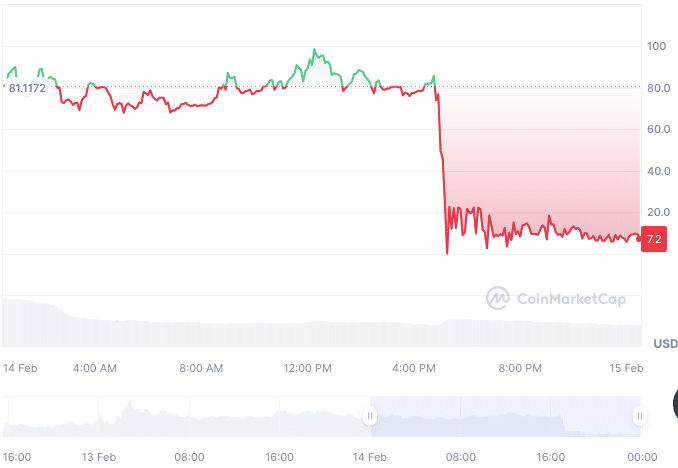A significant event in the world of digital currency recently took place, as Miner, a token created under the experimental ERC-X standard, experienced an 88% drop in value within a few hours. This crash occurred following a panic sell-off due to a bug in its smart contract, which allowed users to double their tokens by sending Miner tokens to themselves. The current price of each Miner token stands at $5.67, a considerable decline from its previous valuation.
The chaos surrounding the Miner token was attributed to a glitch in its smart contract system, which allowed users to exploit the flaw and double their token balances. In response to this revelation, the development team pledged to address the issue and conduct a thorough audit of the smart contract before redeployment. Additionally, they allocated approximately 130 ETH to liquidity provider purposes in preparation for the token’s redeployment, aiming to mitigate the aftermath of the incident.
The introduction of ERC-X marked a significant advancement in Ethereum token standards, combining features from ERC-20, ERC-721, and the innovative ERC-404 standards. This hybrid approach aimed to leverage the benefits of both standards, offering a new method of token interaction within the blockchain ecosystem. However, the recent episode has raised doubts about the experimental nature of the new standards and the risks they entail, emphasizing the importance of rigorous testing and community approval before implementation.
The Miner scandal has elicited mixed reactions from the blockchain community, with some viewing it as a blow to the credibility of ERC-X, while others remain hopeful for the token’s recovery and growth. Security analysts have expressed concerns about the underlying high-level loopholes that allowed the exploit to occur, underscoring the substantial costs of innovation in the absence of standardized reference implementations.
As the developers of Miner work to rectify the glitch and reassure the community, the broader conversation has shifted to the role of experimental token standards in the blockchain ecosystem. The incident with Miner serves as a cautionary tale, highlighting the delicate balance between innovation and the necessity for thorough vetting and security measures.
In my opinion, the events surrounding Miner and the ERC-X standard underscore the inherent complexities and risks associated with pioneering developments in the digital currency space. While innovation is crucial for advancing the capabilities of blockchain technology, it must be approached with a cautious mindset to mitigate potential vulnerabilities and ensure the overall security and stability of the ecosystem. The Miner incident serves as a stark reminder of the importance of thorough testing, community input, and the implementation of robust security measures in the development of new token standards. Moving forward, it is imperative for the industry to prioritize a balance between innovation and caution, underscoring the need for continuous vigilance and proactive measures to safeguard against potential exploits and vulnerabilities.


